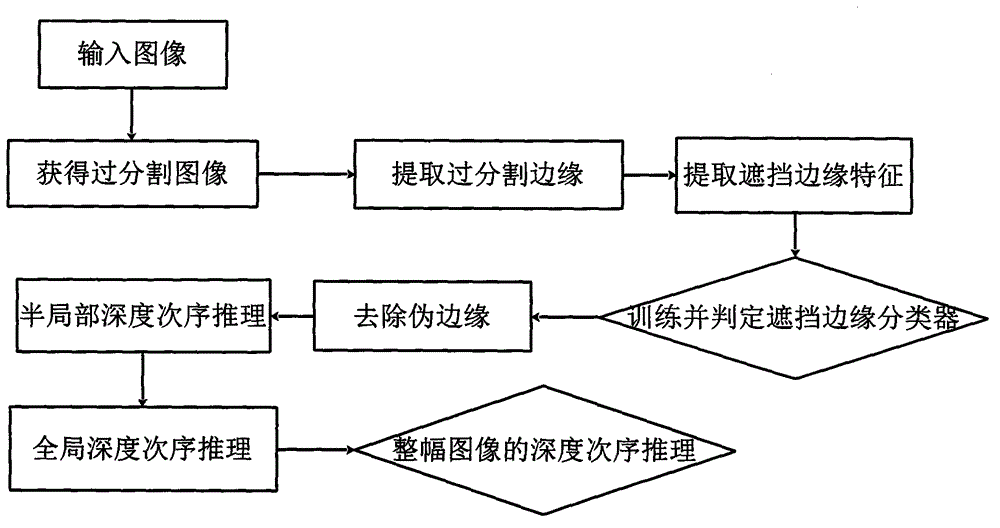Depth order reasoning method based on occlusion feature learning
A technology of depth order and reasoning method, which is applied in the direction of image data processing, instrumentation, calculation, etc., can solve the problem that the effect of depth order reasoning is not very good, and achieve the effect of improving efficiency and reducing search space
- Summary
- Abstract
- Description
- Claims
- Application Information
AI Technical Summary
Problems solved by technology
Method used
Image
Examples
Embodiment Construction
[0026] The present invention will be further described below in conjunction with the accompanying drawings.
[0027] as attached figure 1 Shown: A deep sequential inference method based on occlusion feature learning, including the following steps:
[0028] (1) Obtain the over-segmented image: Firstly, the soft boundary map of the original image is obtained through the Berkeley algorithm, and then a small threshold is used to binarize the soft boundary map to obtain the over-segmented image.
[0029] (2) Extract the over-segmented edge: first calculate all the connection points of three forks, every two connection points form an edge, and a region is formed between multiple edges; then, record all connection points and the distance formed by each pair of connection points Edges, details of the regions on both sides of each edge, and finally, the over-segmented image is divided into three components of connection points, edges and regions, and they are connected to each other. ...
PUM
 Login to View More
Login to View More Abstract
Description
Claims
Application Information
 Login to View More
Login to View More - R&D
- Intellectual Property
- Life Sciences
- Materials
- Tech Scout
- Unparalleled Data Quality
- Higher Quality Content
- 60% Fewer Hallucinations
Browse by: Latest US Patents, China's latest patents, Technical Efficacy Thesaurus, Application Domain, Technology Topic, Popular Technical Reports.
© 2025 PatSnap. All rights reserved.Legal|Privacy policy|Modern Slavery Act Transparency Statement|Sitemap|About US| Contact US: help@patsnap.com



